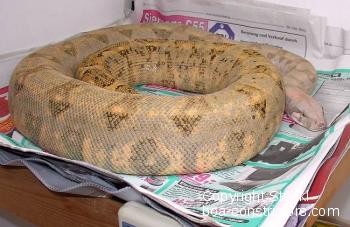- ! ! ! ! ! ! ! ! ! ! ! ! ! Latest Updates
- ! ! ! ! ! ! ! ! ! ! ! ! ! Latest Updates
- ! ! ! ! ! ! ! ! ! ! ! ! ! Latest Updates
- Home
- Boa constrictor subspecies
- Boa constrictor - Interesting Facts
- More boa information
- Boa Gallery
- Boas for Sale
- Contact
Boa constrictor Hog Island
Distribution areaHonduras
Taxonomic status Subspecies recognized by the CITES convention
| Mexico |
| Tarahumara |
| Belize |
| Crawl Cay |
| Ambergris Caye |
| Columbia |
| Ecuador |
| El Salvador |
| Costa Rica |
| Honduras |
| Nicaragua |
Hog Island Boas information | Hogg Island Boas | Hog Island Boa c. imperator information | Hog Island Boa report | true Hog Island Boa information | purebred Hog Island Boa size | Boa c. imperator Hog Island Boa length
An interesting color variation of Boa c. imperator was imported to Germany first in 1988 from Cayo de los Cochinos, an Island off the coast of Honduras.
These animals, the so-called Hog Island Boas (Hog Island is the nickname of Cayo de los Cochinos) are also a naturally hypomelanistic form.
The basic coloration ranges from a milky white up to a dark grey-brown. Some extraordinary specimens even show a shining orange colour.
The "hoggies" have frequently been labelled as "Boa c. sigma" by retailers. This is obviously incorrect. By the way, it is doubtful that "Boa c. sigma" exists at all. This boa is no longer mentioned in recent publications.
But back to the hoggies: Taxonomists agree that they are but an island form of Boa c. imperator. We are no taxonomists or scale counters, but we think it is a pity that the Hog Island boa was not recognized as a separate subspecies.
The Hog Island Boa boom in the early 80s resulted in the excessive exploitation of these animals. Along with habitat destruction and the common killing of boas by the natives, this lead to the number of boas on Cayo de los Cochinos apparently decreasing to an amount at which the existing population seemed to have no chance of long-term survival. A field study performed by biologists in 1986 has shown that not a single specimen of this insular variety of Boa c. imperator could be found (Wilson & Cruz, 1993).
Considering these causes and the destruction of the coral reefs which surround the islands it is a godsend that the Smithsonian Institution at Washington, D.C. has signed a convention with the Honduran government which declared the Cayos de Los Cochinos and the adjacent waters a nature reserve (Reserva Marina Cayos Cochinos) for a period of 50 years. The Smithsonian Institution obligated itself to support this project with experts and funding.
Apparently, the Hog Island Boa population on the islands seems to have recovered as this email from December 2008 indicates:
Hello,
I am a field biologist from Cal Poly, San Luis Obispo, California. My main focus is rattlesnakes but I have been given an incredible opportunity to go to the Cayos Cochinos islands to research the Boa Constrictors there. Although these animals can not be exported and therefore the captive stock is in decline, you should have the correct facts about the wild population. They are still present on the big and small islands of the Cayos Cochinos and most active during the wet season. This information is based on annual trips by myself, other graduate students, and professors within the last five years. The big island is open to the public, however you must arrange with the Honduran Coral Reef Foundation to get on the small island.
They are amazing animals, especially in their natural setting, and deserve conservation efforts. While as a breeder you might not feel as strongly about wild populations, please change the information on your website so that the public knows these animals are still around to be seen and protected.
Thank you,
Jordan Ahle
Biological Sciences Department
Physiology and Ecology of Reptiles Laboratory
Cal Poly, San Luis Obispo, CA, 93047
Bottom line:
The island population seems to have recovered, but the captive stock is in decline. What makes things even worse is that a breeder in the U.S. started to breed his Hog Island Boas to his crossbred hypomelanistic boas, in order to get offspring of a nicer appearance. Ironically, he actually earned applause for the outcome.
Hog Island boas change their shade. While they are extremely bright and almost without recognizable markings in the morning, they are darker and rich in contrast in the evening. The "Hogies" are a small morph. Normally the females reach 6 ft in length at the most.



